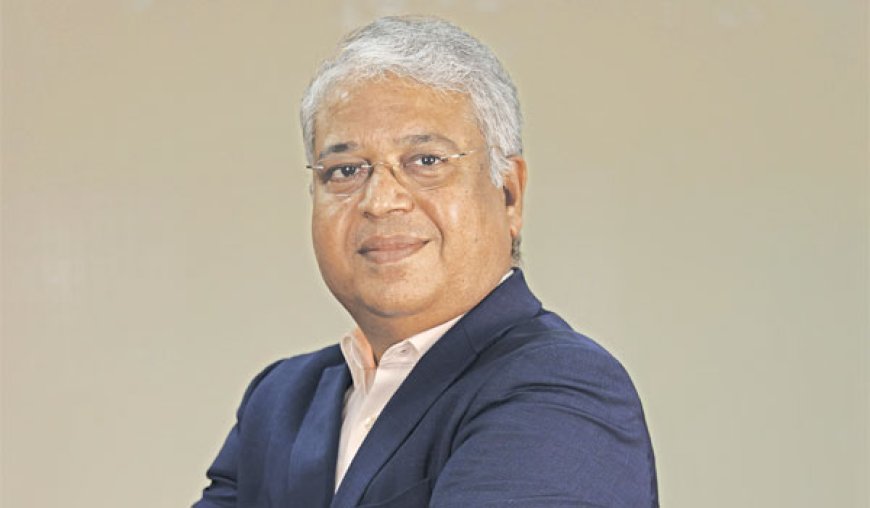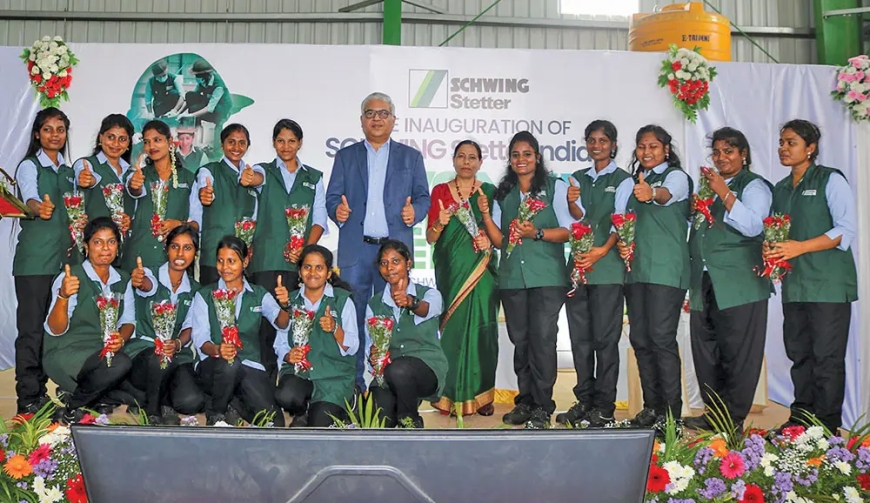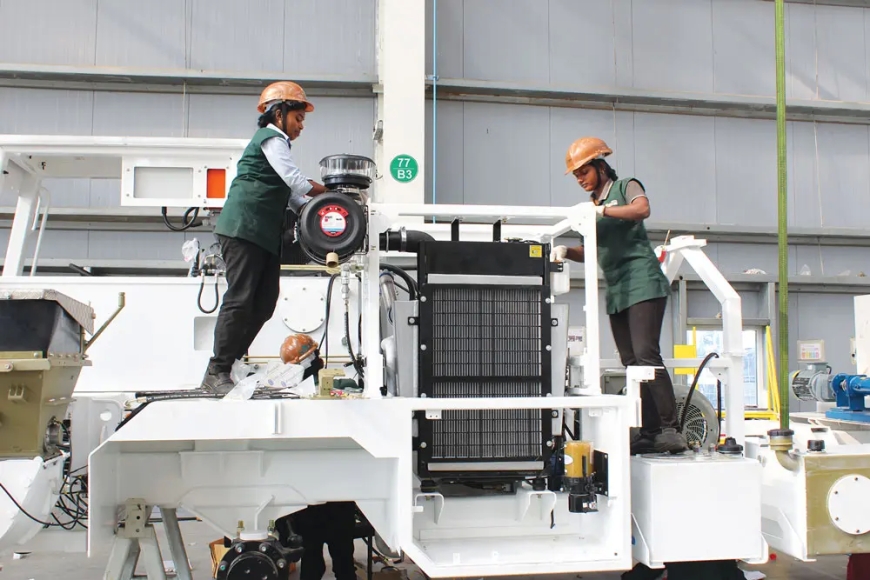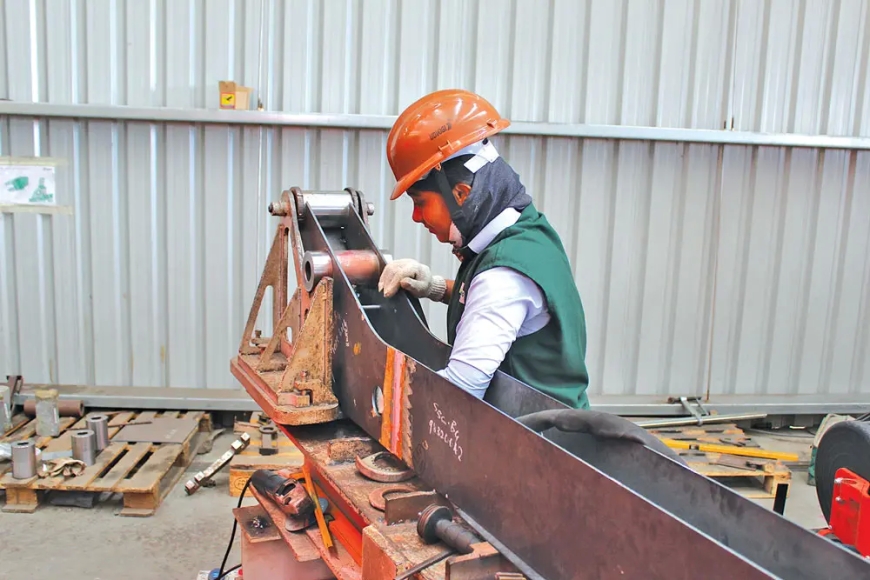At Schwing Stetter India, gender diversity is not just an initiative—it’s a commitment.
The construction equipment industry is undergoing a significant transformation, and women are at the forefront of this change.

V.G. Sakthikumar
Chairman & Managing Director, Schwing Stetter India
How do you see the role of women evolving in the construction equipment industry?
The construction equipment industry is undergoing a significant transformation, and women are at the forefront of this change. While traditionally considered a male-dominated sector, advancements in technology, automation, and ergonomic machine designs are breaking down barriers, enabling more women to take on roles in operations, engineering, manufacturing, and leadership. At SCHWING Stetter India, we have actively embraced this change, not just by employing women but by empowering them with training, career development programs, and leadership opportunities. With the right infrastructure and policies in place, we envision a future where women play an integral role in shaping the industry’s growth and innovation.
What are the key challenges women face in this traditionally male-dominated sector?
The biggest challenge is perception. There has long been a belief that construction and heavy machinery operations require physical strength, making them unsuitable for women. However, modern equipment has evolved, with intuitive controls, automation, and ergonomic designs reducing physical strain. Another challenge is the lack of access to specialized training, which limits opportunities for women. Workplace safety and inclusivity have also been concerns. However, companies that recognize these barriers—like SCHWING Stetter India—are actively working to dismantle them through education, training, and inclusive work environments.

What steps has your company taken to promote gender diversity and inclusivity in the workforce?
At SCHWING Stetter India, gender diversity is not just an initiative—it’s a commitment. We have implemented targeted hiring programs to bring more women into technical and operational roles. One of our landmark achievements is the launch of India’s first-ever all-women service centre in the construction equipment industry. This initiative not only provides employment opportunities but also creates a model for inclusivity in a sector that has traditionally been male-centric. Our workforce today includes women in engineering, machine servicing, R&D, training, and leadership, reinforcing our belief that gender should never be a barrier to excellence.
Can you share details about any specific policies or programs aimed at recruiting, retaining, and upskilling women in your company? How do you address skill gaps and ensure equal career growth opportunities for women?
We have implemented a structured recruitment and skill development program for women, ensuring that they receive comprehensive training in construction equipment operations, servicing, and manufacturing. Our collaboration with institutions like IESC (Infrastructure Equipment Skill Council) enables women to receive certifications in machinery operation and maintenance, enhancing their employability in the industry. Additionally, we provide mentorship programs and leadership training to ensure that women have a clear growth trajectory within SCHWING Stetter India, whether they enter at an entry-level role or as experienced professionals.
 How does your company provide special training programs or mentorship initiatives to encourage women’s participation in construction equipment operations, engineering, or manufacturing?
How does your company provide special training programs or mentorship initiatives to encourage women’s participation in construction equipment operations, engineering, or manufacturing?
Training is the foundation of empowerment. We have established dedicated skill development programs that focus on training women in technical roles, particularly in machine servicing, engineering, and operations. Our in-house training academies provide hands-on experience with SCHWING’s advanced machinery, ensuring that women gain confidence and technical expertise. Additionally, our mentorship programs connect women with industry veterans who guide them through career development, skill enhancement, and leadership grooming. These initiatives are designed to not only recruit women but to help them excel and lead.
What measures have you implemented to ensure a safe and inclusive workplace for women?
A workplace is only truly inclusive if it is safe. At SCHWING Stetter India, we have implemented a zero-tolerance policy for discrimination and harassment, ensuring that women feel secure and respected in their roles. Our manufacturing and service facilities include women-friendly infrastructure, such as secure transport, well-lit workspaces, and designated rest areas. Additionally, we have created an open and transparent grievance redressal system, where concerns can be addressed immediately. Beyond safety, we focus on creating an environment of respect and equal opportunities, where talent is the only factor that determines growth.
 What more can the industry do to encourage greater participation of women in the construction equipment sector?
What more can the industry do to encourage greater participation of women in the construction equipment sector?
The industry needs to proactively encourage women to consider careers in construction equipment by showcasing success stories and making opportunities more visible. Companies should collaborate with educational institutions to introduce specialized training programs that equip women with the skills required to enter the field. Additionally, organizations should implement return-to-work programs for women who have taken career breaks, ensuring they can re-enter the workforce with ease. Above all, the industry needs to change the narrative—construction is no longer just a man’s world, and the more inclusive it becomes, the more it will thrive.
What are your recommendations for policymakers, industry leaders, and educational institutions to create a more inclusive workforce?
• Policymakers: Introduce incentives and tax benefits for companies that implement gender diversity programs in the construction equipment industry. Support training and skill development schemes specifically designed for women.
• Industry Leaders: Actively hire, mentor, and promote women in technical and leadership roles. Invest in R&D to develop equipment that is user-friendly for all genders.
• Educational Institutions: Integrate construction equipment training into technical and vocational courses. Conduct outreach programs that encourage female students to consider careers in engineering, manufacturing, and heavy machinery operations.
A collaborative effort between these stakeholders will lead to a workforce that is not only diverse but also more skilled, innovative, and future-ready.
Would you like to add any further insights or suggestions on women empowerment in the construction equipment industry?
Women empowerment in this industry is not just about hiring women—it’s about equipping them with the skills, opportunities, and confidence to excel. At SCHWING Stetter India, we have seen firsthand how women bring efficiency, precision, and innovative thinking into the workforce. The launch of our all-women service centre is just the beginning—we envision a future where women are leading in operations, R&D, and decision-making roles in this industry.








